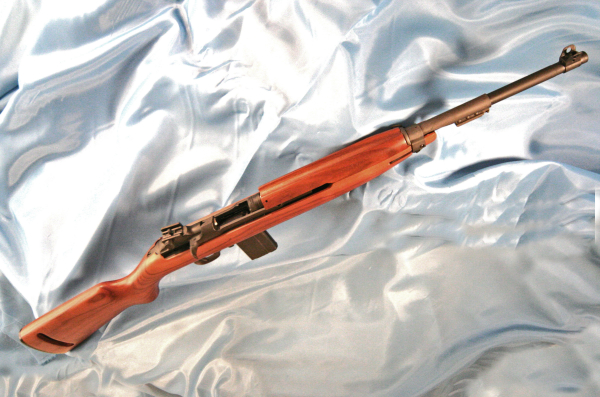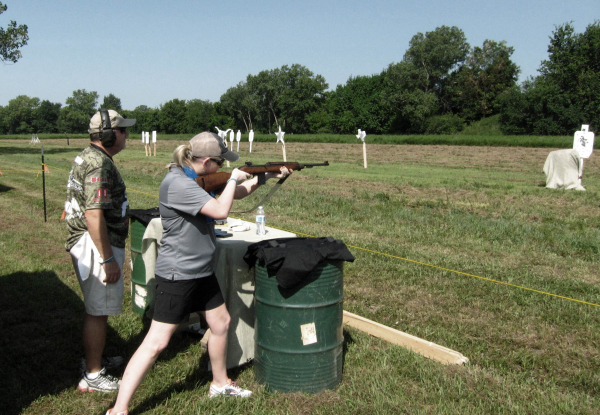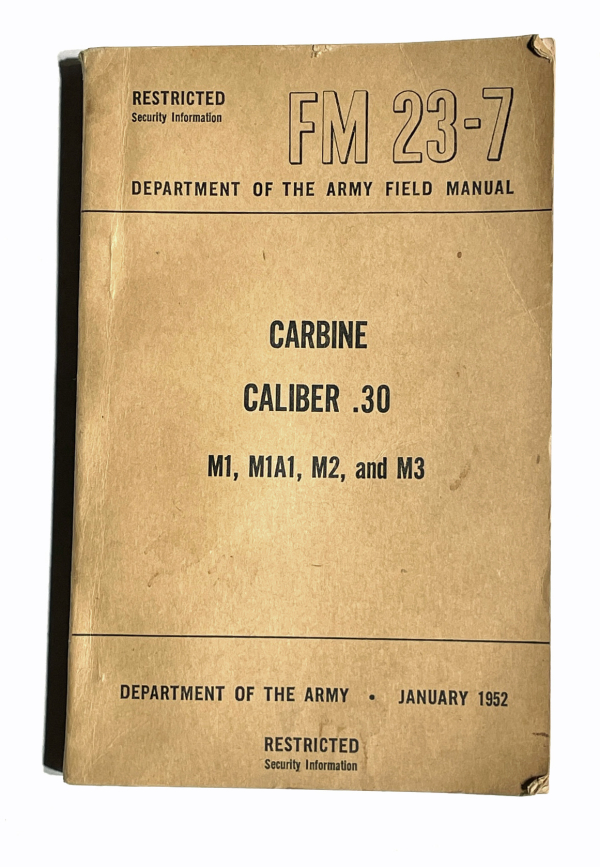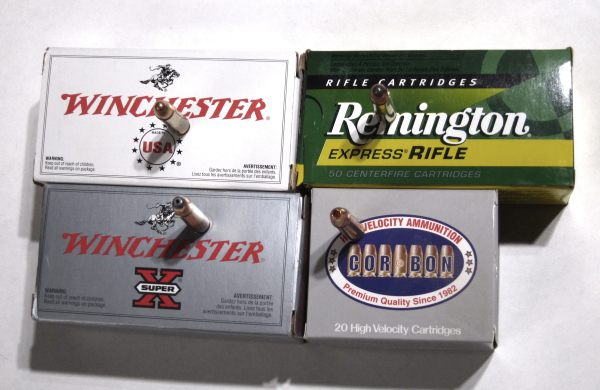In an oft-told history, we know that the US Carbine, Caliber 30, M1 (and variants) was the most-manufactured military small arm in US history. At six million units, it was (and is) plentiful and non-military variants are being built to this day.

I had an original, an Inland (the most common US carbine), that featured the later adjustable peep sight, a barrel band with bayonet lug and the rotating safety.
It’s a remarkable firearm, light and with a shorter length of pull. The idea was allegedly to replace the US sidearm – the 1911 (and variants), of which we never seemed to have enough. A smattering of revolvers filled the void as did the smaller guns meant for general officers. The Army determined that enough was enough.
The carbine, weighing in at just over five pounds, held fifteen rounds of the short 30 caliber cartridge. The most commonly encountered round is the 110 grain round nose full metal jacket projectile that gets around 1,900 feet per second from the M1’s 18” barrel.
It’s not the 30-06, a battle rifle cartridge, but it’s still better than most conventional handguns. And the carbine is vastly easier to shoot well than conventional handguns.


According to the Civilian Marksmanship Program website, “The M1 Carbine was designed primarily to offer noncombat and line-of-communications troops a better defensive weapon than a pistol or submachine gun, with greater accuracy and range, but without the recoil, cost, or weight of a full-power infantry rifle. The carbine was also easier for less experienced soldiers and smaller-framed people to fire than the .30 caliber infantry rifles of the day. The carbine was more convenient to carry for officers, NCOs, or specialists encumbered with weapons, field glasses, radios, or other gear.”
It accomplished that mission nicely.
The 30 Carbine got a generally crappy reputation from a number of folks – some of whom were actually “there,” but mostly “I heard from someone who heard from someone …”


A personal friend’s dad saw significant combat in the unpleasantness of Korea. He preferred the carbine over the M1 Garand for the most common engagements he’d faced, the “human wave” assaults by the ChiComs. He’d said that people alleged that the 110gr FMJ didn’t adequately penetrate the quilted field coats of the Chinese in winter battles.
That wasn’t his experience and he also considered “shooting a bit high” regardless of the rifle to be a good plan.
The Inland Division that made my carbine was part of General Motors. Other makers of the GI carbine included Winchester, Underwood, Saginaw Steering Gear (also GM), National Postal Meter, IBM, Rock-Ola and others.
Current makers are Auto-Ordnance (Kahr), Inland Manufacturing, and Fulton Armory.
Of what value is the M1 Carbine today? Well, it’s a piece of history, a part of a solution to a seriously bad time. For collectors, it’s a deep dive into the myriad variations of the most-manufactured military rifle in U.S. history. If it’s early, it’s got the “L” rear sight, no barrel band bayonet lug – and does the barrel manufacturer match the receiver’s maker?
According to friend and mentor Jim Cirillo, it seemed to be the most effective at stopping fights during the various battles involving the old NYPD Stake-Out Unit – even better than shotguns!
It’s handy, light, easily used by smaller statured individuals. There’s not much to dislike – unless you count the variability in ammo, and its availability.
The typical round, the 110gr. FMJ is fine for range use. There is – or was – a 110gr. hollow point load from Winchester, a 110gr. softpoint offering from Remington and, for a while, Cor-Bon loaded a DPX 100 grain HP in 30 Carbine.
If you’d like a compact, reasonably powerful close range firearm for hunting, ranch & farm use or just to take to the range, the M1 Carbine serves well – and you’re holding history in your hands.
-- Rich Grassi